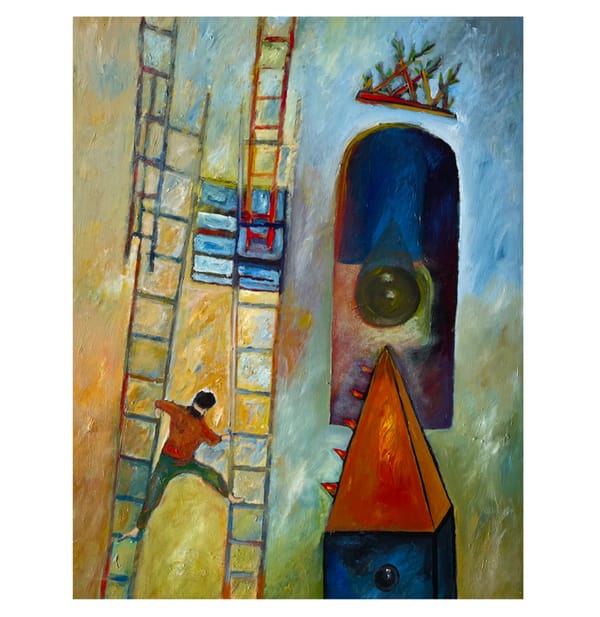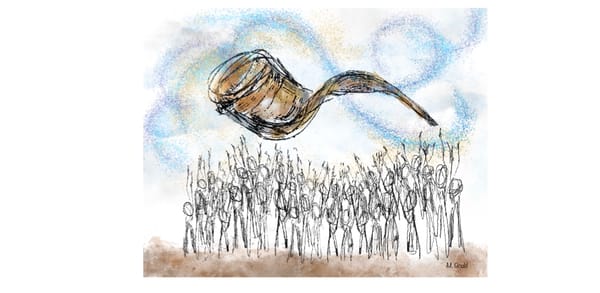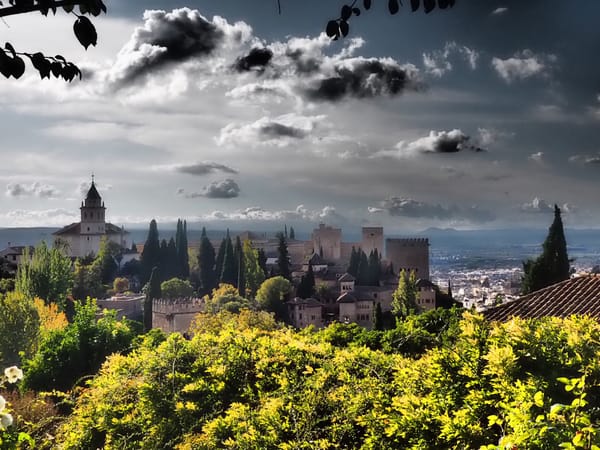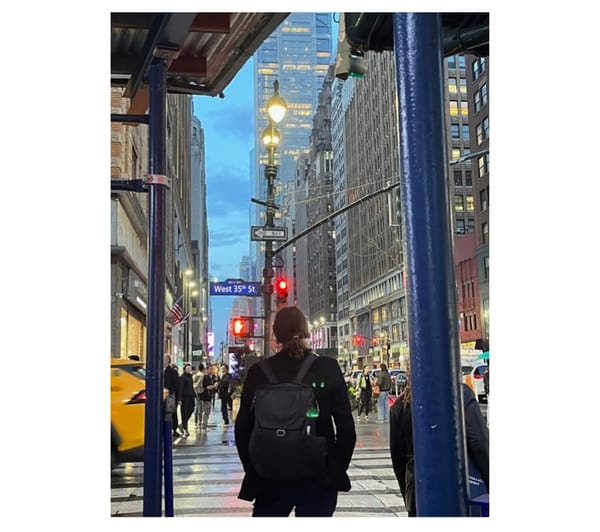Israel Experience

By Ben Bleiman
I first visited Israel in 2022 as the world crawled out of another long pandemic winter. I’d registered for a Taglit trip twice in the previous 15 months only for them each to be cancelled just days before I was scheduled to leave, and I wondered whether the pandemic would end or if I would ever set foot in Israel. But fortunate circumstances finally aligned and I found myself stepping out of Ben Gurion International Airport onto a tour bus with my Taglit group in early March 2022. Because I both hadn’t been involved in the Jewish community for five years since I graduated college, and the past two years had passed with very little sense of community around me, this first trip to Israel was a truly powerful experience.
It took me several days to adjust to all the beauty, activity, and human interaction on Taglit, but the next three weeks solidified my connection to Judaism. The past winter had been very wet in Israel and the countryside was ablaze with lush greenery and wildflowers. The constant flurry of activity with so many new friends on Taglit was a whirlwind of excitement. After Taglit, I traveled solo for ten days across Israel and had a variety of invigorating experiences: I stayed at a hostel in Farod and made new friends with the staff; I hiked Mt Arbel and Nahal Amud alongside roughly 100 Israeli schoolchildren; and I wandered the streets of Tzfat and was invited for a salmon dinner at the apartment of an American from Boston who dropped everything to study Torah. For the next year and a half, I thought about Israel often.
When I woke to the news of the attack on October 7th, my first reaction was concern for my parents who, due to purely bad luck, were visiting Israel on their first trip since the 1960s. My second thought was “How can I get back to Israel as soon as possible?”
In the wake of the October 7th attack, Taglit quickly developed a volunteer program to connect Jews with places in need across Israel. Available to any Jew 18-40 years old, this program was heavily subsidized with lodging covered, a modest food stipend, plus a significant flight subsidy. I had free time in between jobs during May 2024, so I figured what better time to volunteer in Israel than now? To help me cover the rest of the trip expenses, I applied for and received the Israel Experience Fund scholarship through the very generous support of the Jewish Community Foundation of New Mexico.
Most of my friends and family were understandably nervous about my traveling to Israel during a time of war, but my determination to help Israel in its time of need overrode all those anxieties. I flew to Israel and had several days to explore by myself before the volunteer trip began, so I met with my former Taglit tour guide, Yossi, and spent several days exploring Israel with another friend I met on Taglit, Ido! I also visited Ben Gurion’s house in Tel Aviv from where he ran the country as Israel’s first prime minister, took a day trip to Jerusalem, and met a friend of a friend for drinks in Tel Aviv. Life largely continued as normal here. From every vantage point, however, hostage posters or signs encouraging national strength lined every street as a constant reminder of the background grief and anxiety that clearly lingered in every Israeli’s mind. Even in my first moments in Israel walking down the arrival hall at Ben Gurion Airport, it was impossible to miss the posters of each hostage that lined the walls, many with messages written on them and items gathered before them as a small memorial.
I met my volunteer group at Avraham Hostel in Tel Aviv and the trip started with an informational session plus the classic Taglit icebreaker activities. Amazingly, among the 45 of us on the volunteer trip, 9 countries were represented! Jews from the US, Canada, Uruguay, Brazil, Colombia, the UK, Germany, France, and Australia aged 19-39 had converged together to support Israel!
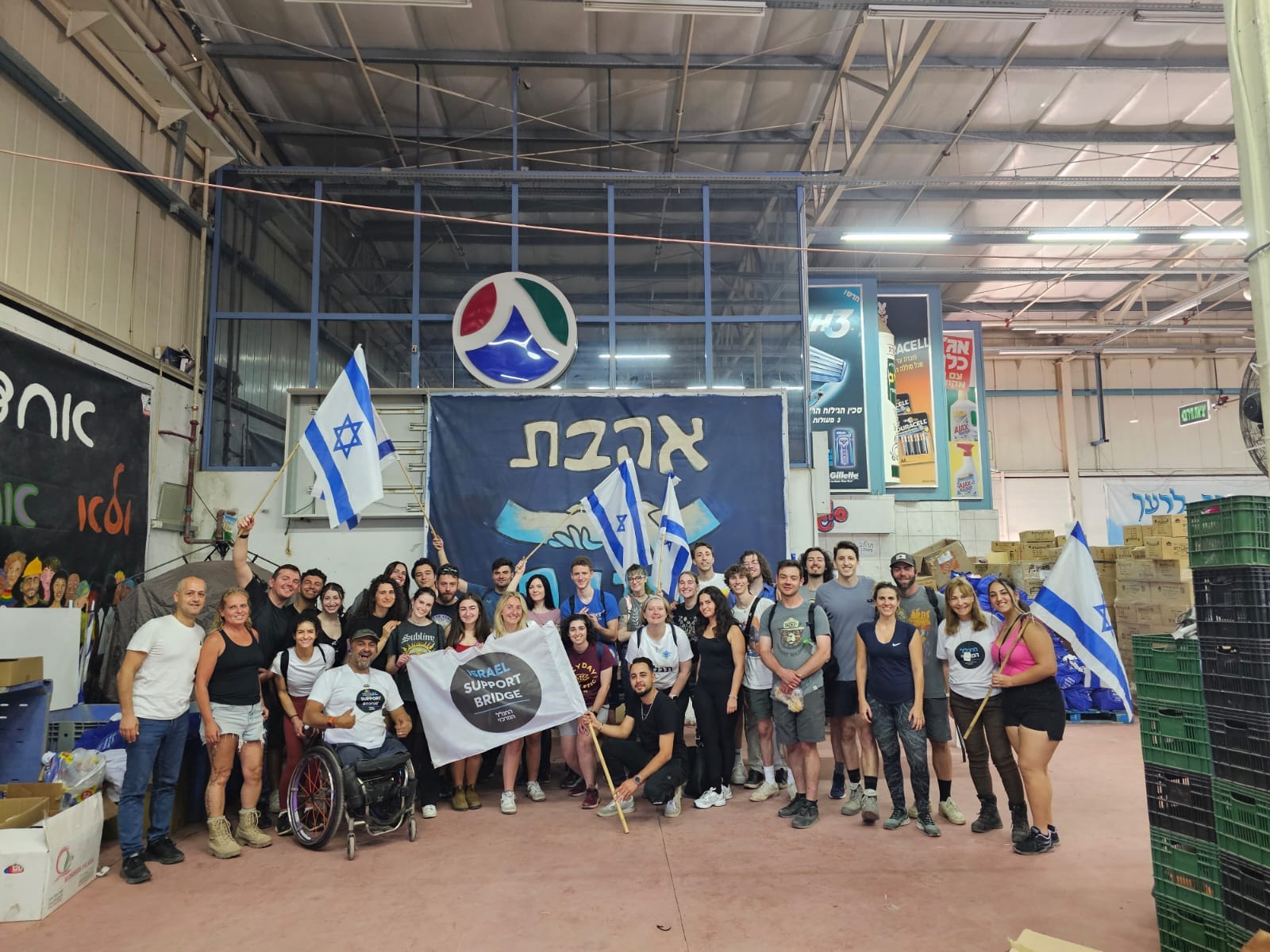
Over the next 12 days, the majority of our volunteer efforts involved sorting and packaging donations of all sorts, from clothing and toiletries to canned foods and fresh produce. Though it was all simple work, the force multiplication of dozens of volunteers each working to process donations proved highly effective. We spent our first three days volunteering at Israel Support Bridge in Petah Tikva. This non-profit organization was formed on October 7th in a remarkable display of ingenuity and resilience by three Israelis, unknown to each other previously, who had gone to a local grocery store to ask customers to buy any food or goods for families and soldiers in need. The three of them scrambled together a supply chain in the immediate aftermath of the attack, and as literal plane loads of donations poured into Israel, the organization rented a warehouse that had been abandoned for 15 years and continued to expand their efforts. We sorted thousands of socks and shirts and repackaged them for distribution across the country.
Our first weekend in Israel was filled with emotional highs and lows, grief and joy following closely behind each other, something I’ve learned is a part of life for all Israelis. We visited Hostage Square in Tel Aviv where we heard from Noa Reuveni, the lifelong friend of Ziv and Gali Berman, who were taken hostage from Kibbutz Kfar Aza and remain in Gaza today. Art exhibits dedicated to the hostages were displayed across the square as somber reminders of all the hostages’ suffering. Our volunteer group ended the day by cooking a large Shabbat dinner together that was shared on the hostel roof with beautiful views of Tel Aviv. The next day, many of us relaxed at the beach for the afternoon and then attended a rally for the hostages, a weekly occurrence every Saturday since the attack. It was deeply emotional with speeches from friends and family of many hostages, including the mother of Andrey Kozlov, who was taken hostage from the Nova music festival. Immediately upon hearing of her son’s fate, she moved to Israel from Russia and lived in Andrey’s apartment, surrounded by all his belongings, and learned Hebrew from scratch to better connect with Israel and her captive son in Gaza. The pain in her voice was piercing and the collective shouts demanding the return of every hostage rang unceasingly in the air. Miraculously, he was rescued safely just a few weeks later. It was surreal to see this same woman on the news finally be reunited with her son who only weeks ago I had seen at the rally speak with such grief in her voice.
The next week we volunteered at a produce warehouse in the Givat Shaul neighborhood of Jerusalem cleaning and packaging cabbage, eggplant, onions, carrots, and potatoes for families in need. We spent another day at Latet in Bet Shemesh, a well-known nonprofit organization in Israel, and again sorted and packaged food donations—it was organized chaos but some of the most efficient and productive work we did the whole trip! The following day we volunteered at a farm in Moshav Shekef tending to baby plants, then toured the ruins of a Roman colosseum at Beit Guvrin National Park where Jews were enslaved following the Bar Kochba revolt. The weather on this day was brutal, and as we stood in the center of the colosseum, the baking hot sun was a small reminder of the suffering those ancient Jews must have felt surrounded by their captors.
Our trip guide, Or, led a tour on Friday through Jerusalem’s Old City which included a stop at Batei Makhase square. Or recalled the long history of Jewish exile and the attempt by many ruling powers to separate the Jewish people from their homeland and holiest city, then pointed to a passage inscribed on a stone wall of the square:
“Thus says the LORD of hosts: ‘Old men and old women shall again sit in the streets of Jerusalem, each one with his staff in his hand because of great age. The streets of the city shall be full of boys and girls playing in its streets.’
We looked around the square and saw a class of young boys playing soccer with kippot on their heads and tzitzit hanging along their sides. After 2000 years of exile and 19 years of banishment from the Old City following the War of Independence, these young children, focused on nothing but their soccer game, provided the most moving display of Jewish resilience yet.
My second visit to Israel was vastly different in many ways, but only added to my understanding of Jewish life and my place in it. First was the incredible warmth I feel in Israel and the strong sense of belonging here in the world’s only Jewish state. Unfamiliar to me as an American, however, was the regular coexistence of deep grief for the numerous atrocities Israelis have endured together with the indestructible drive for life. Though it seems that most Israelis remain committed to their normal lives, I found that it often only took a few questions about their feelings following October 7th to uncover the grief that now colors daily life. But their refusal to be denied joy in life remained more remarkable, an example that Jews around the world should embrace. In my free time on this volunteer trip I was also fortunate to spend time in nature with a close friend, and the natural beauty of Israel remained profoundly moving. With such beauty and a strong, vibrant culture that has persisted for millennia, how could you not feel an impulse to sustain and protect it? I have already begun to plan my next visit.
More information on scholarships opportunities for individuals available from the Jewish Community Foundation of New Mexico here.
Return to HOME or Table of Contents
Community Supporter Advertisers of the NM Jewish Journal:
Jewish Community Foundation of New Mexico
Congregation Albert
Temple Beth Shalom
Jewish Community Center of Greater Albuquerque
The Institute for Tolerance Studies
Shabbat with Friends: Recapturing Together the Joy of Shabbat
Jewish Federation of El Paso and Las Cruces
Congregation B'nai Israel
